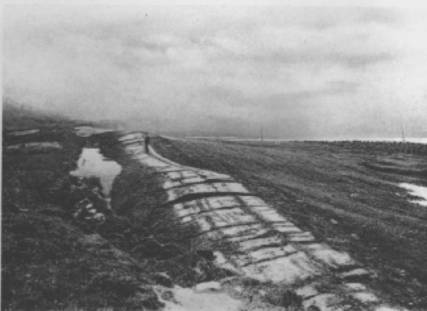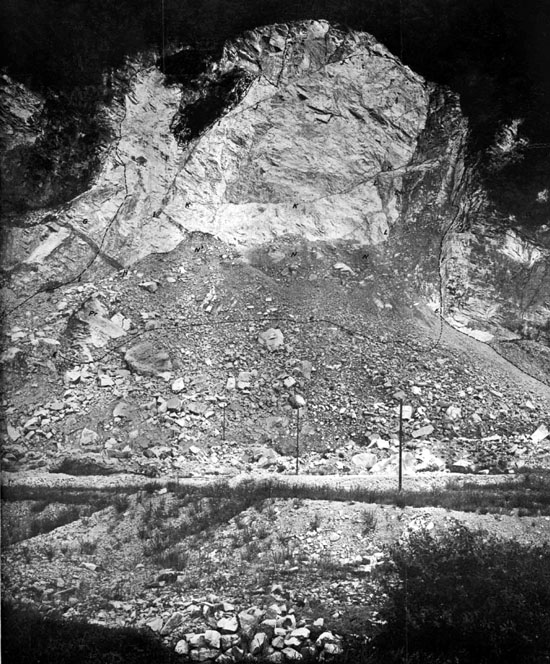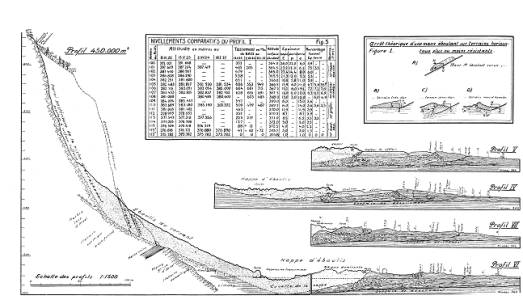The rockslide of Arvel

Fig. 1 : Picture of the deformation of the alluvial plain. Folds of more than 5 m height were observed.
On 14th March, 1922, at 4 PM 615’000 m3 rockslide occurred in a stone quarry (see Fig. 1 in (2) the Pissot page) (Fig. 1). The rockfall propagated on the alluvial plain of the Rhone valley. The alluvial sediments were strongly deformed (Figs. 2 and 3). The style of deformation was thin skins tectonic like. The scar is located in Mesozoic carbonates alternating marls and limestone.
The rockfall promoted by the quarry activity, which destabilized the rock mass crossed by unfavorable structures, such as discontinuities and marls beds.

Fig. 2 : Deposit and scar of the rockfall of Arvel (from Choffat, 1929)

Fig. 3 : Cross section showing the style of the strong deformation affecting the alluvial sediments (from de Choffat, 1929)
References:
Choffat, Ph. (1929): L’écroulement de Villeneuve de 1922. Bull. SVSN 57, 5-28. (SVSN)
Jaboyedoff M. (2003) : The rockslide of Arvel caused by human activity (Villeneuve, Switzerland): Summary, partial reinterpretation and comments of the work of Choffat, Ph. (1929): L’écroulement d(Villeneuve) de 1922. Bull. SVSN 57, 5-28. Quanterra OPEN FILE REPORT – NH-03. 10p.
